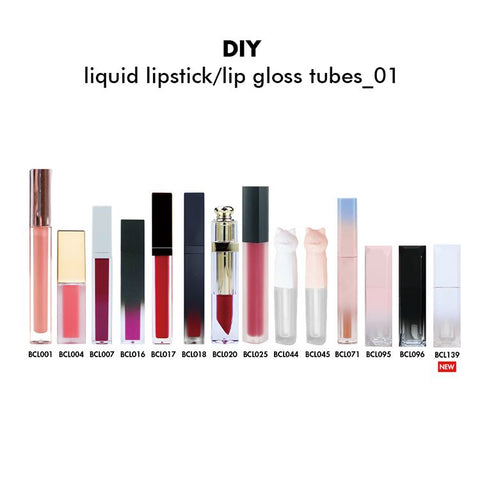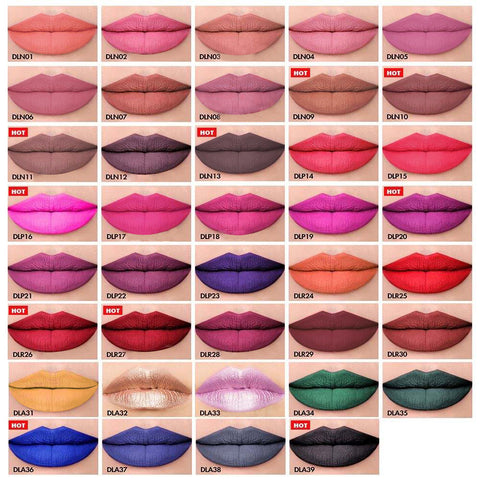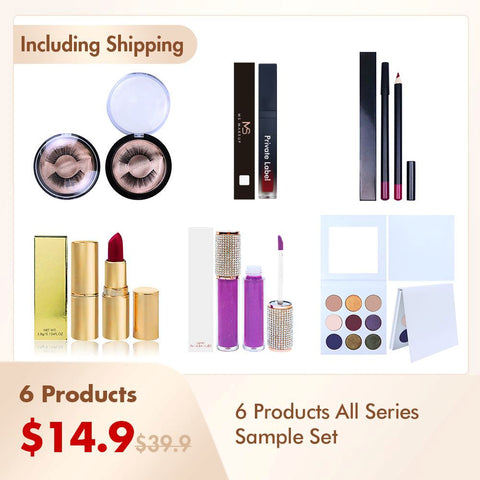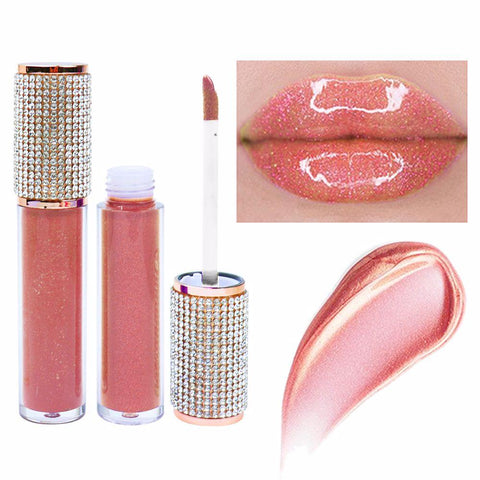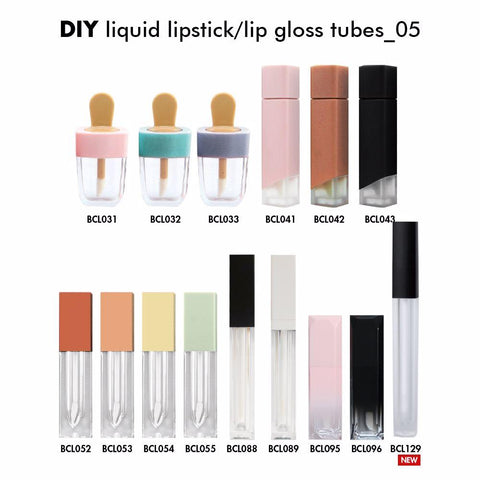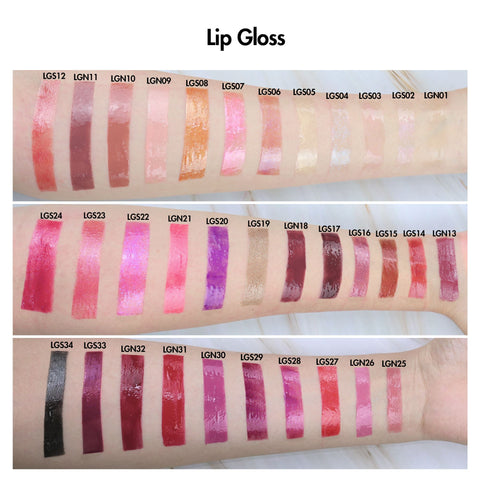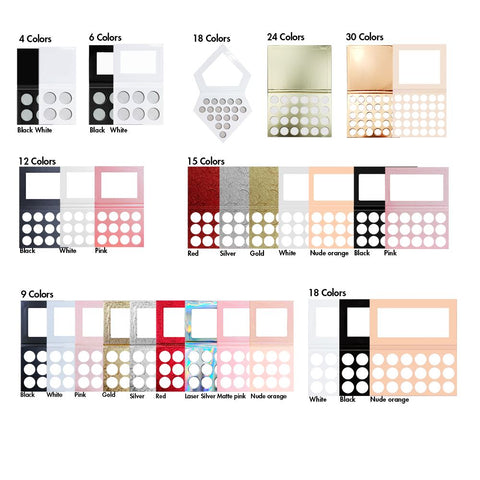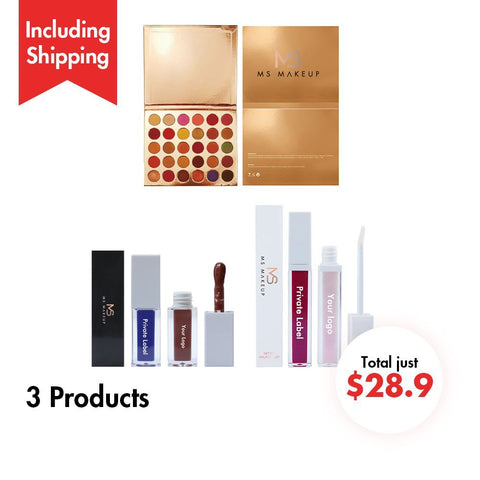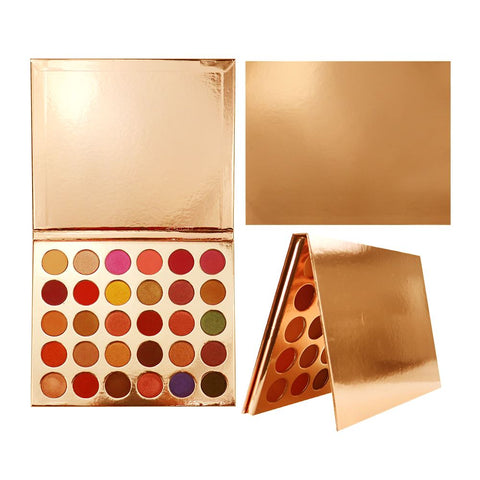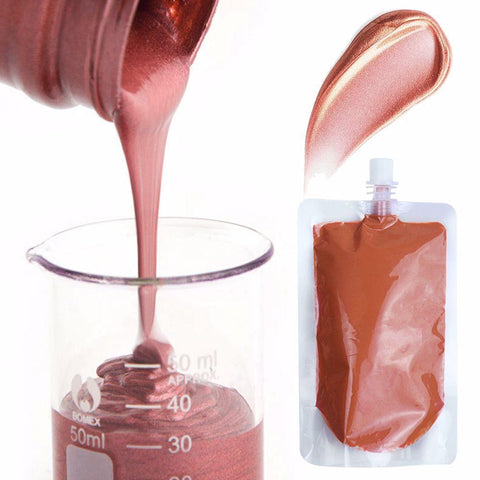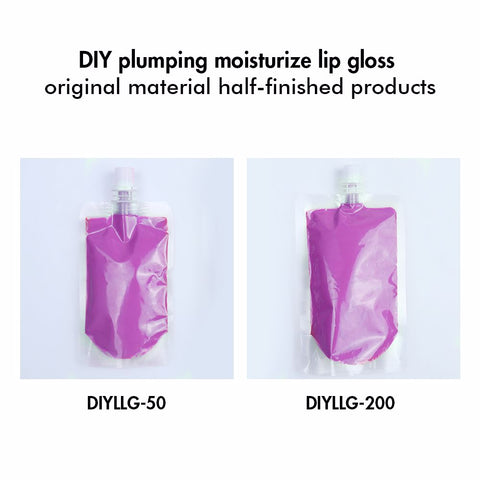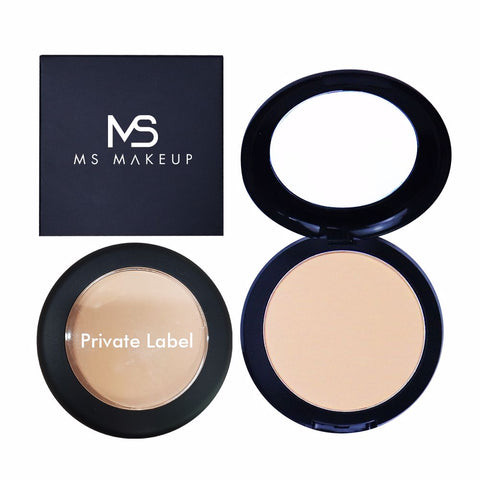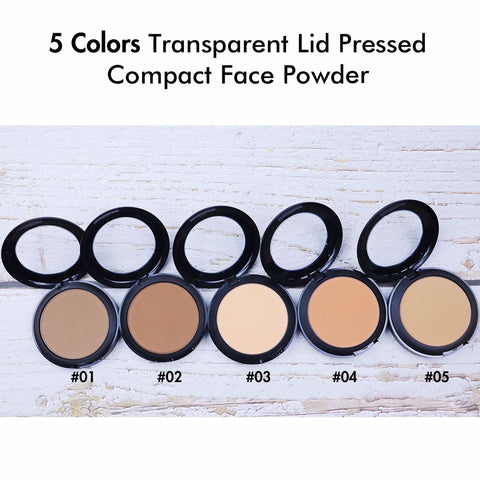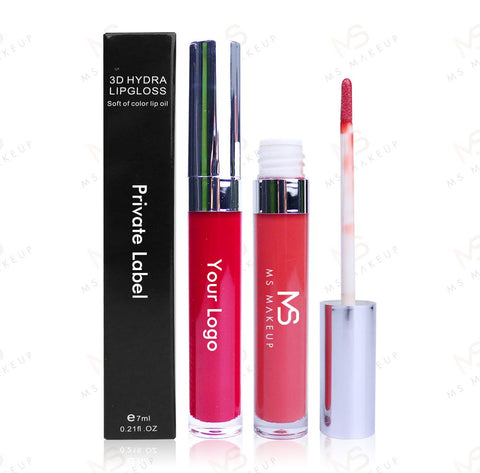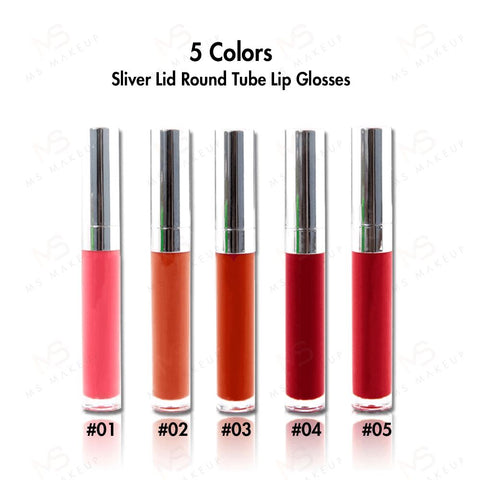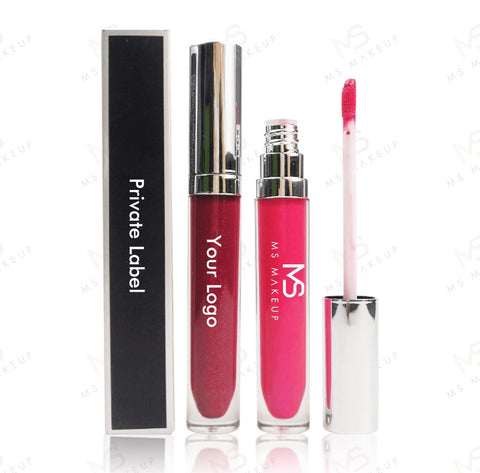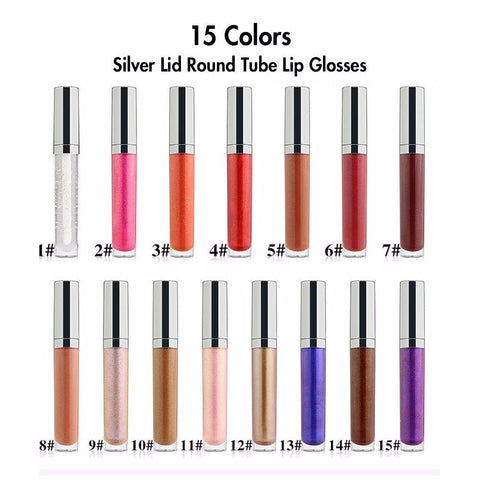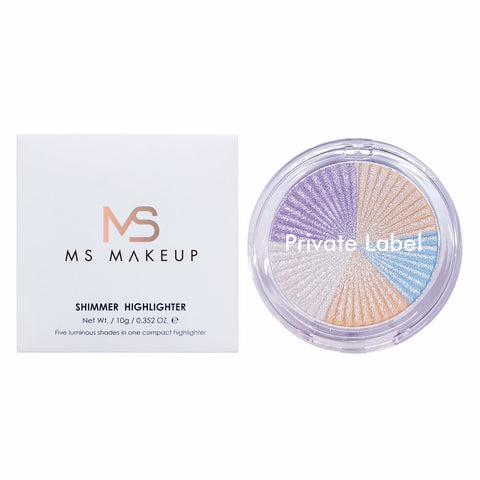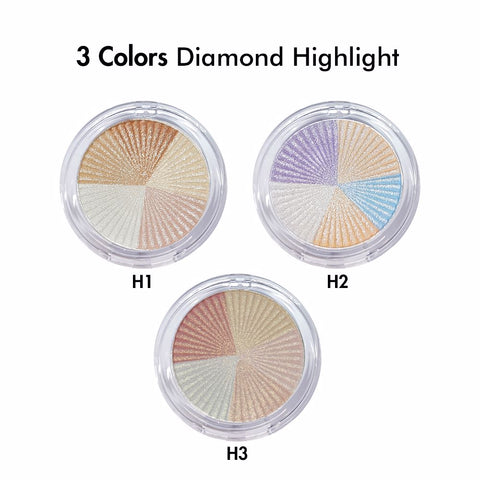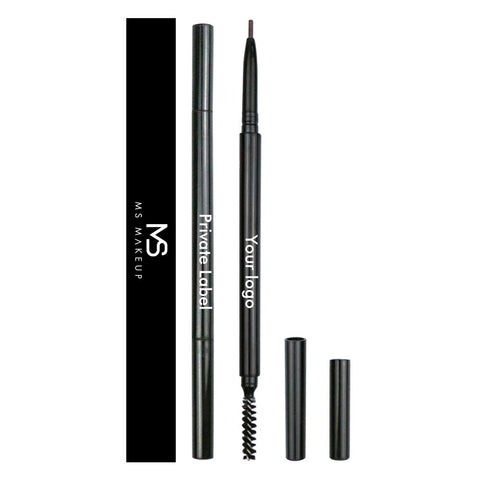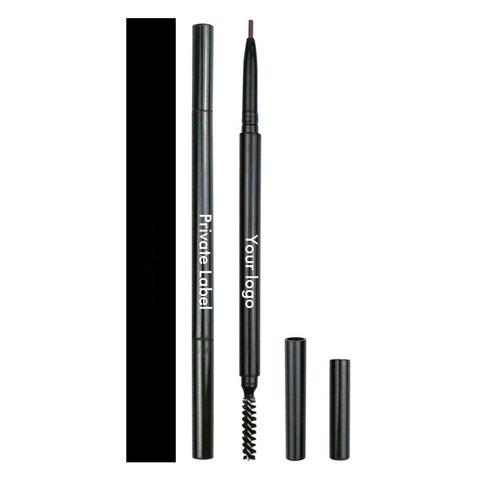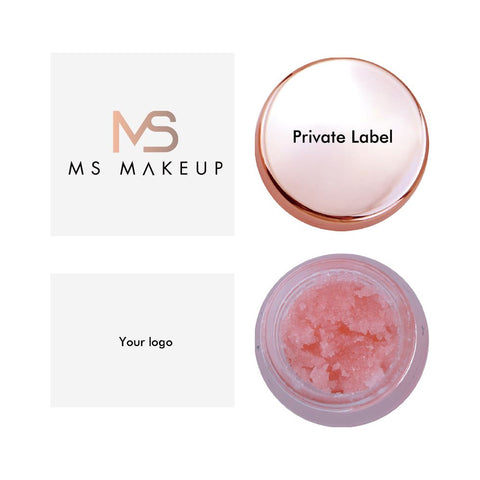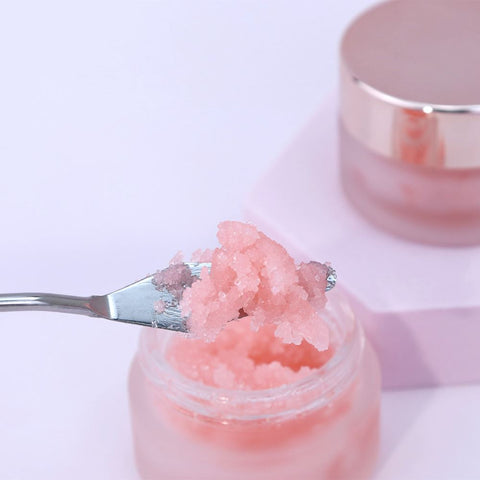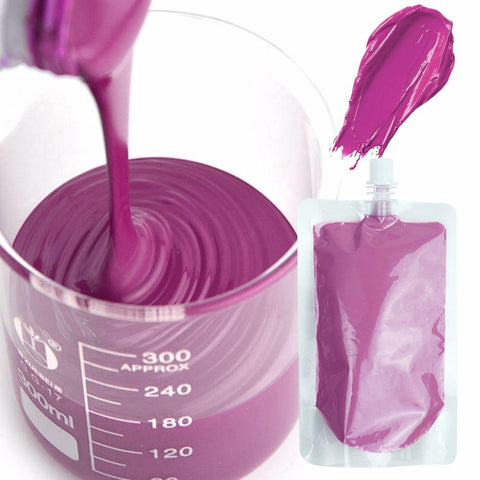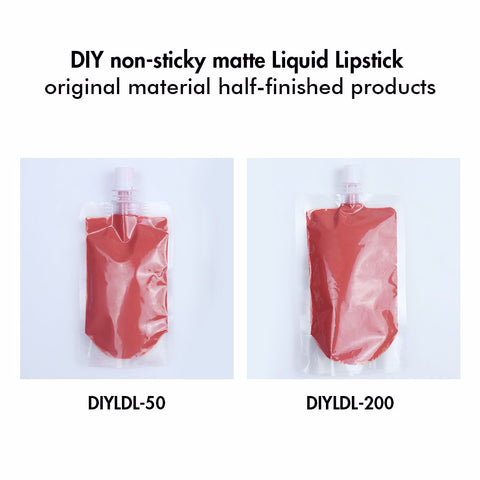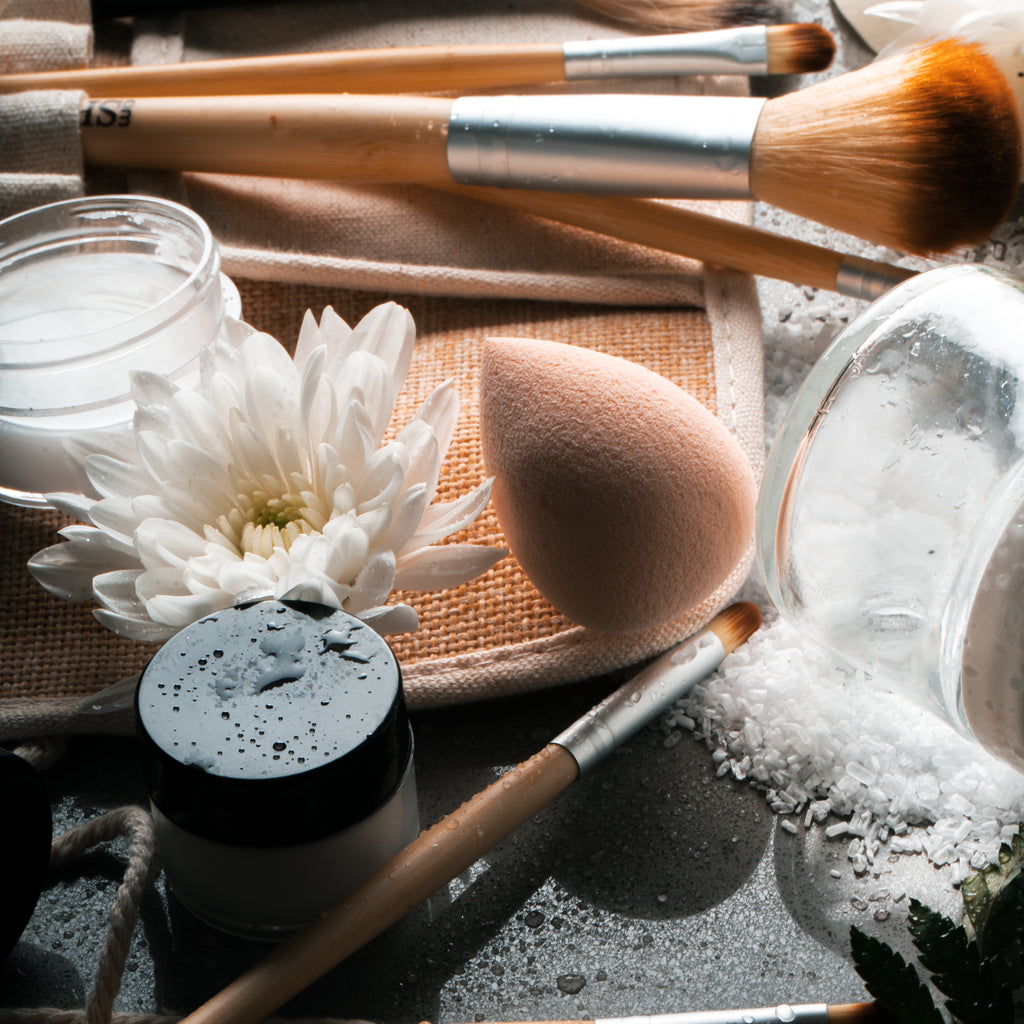Diversity Matters: This Makeup Brand’s Movement for Inclusivity
It all started with a movement
Felix: Tell us about the blog and Instagram account that came before MFMG Cosmetics.
Tomi: The Instagram page actually started first. And what I was doing at the time was sharing content geared towards women with darker skin tones. I was actually sharing different makeup artists around the world that were doing great work and promoting them, shouting them out, sharing their work and it took a life of its own. I soon got 10,000 followers. It was something that people were really enjoying. This was around 2015 when I started this Instagram page. There weren’t a lot of online communities that were exclusively focused on product recommendations and makeup shopping for darker skin tones.

Felix: What was the technique that you were doing to build up your Instagram page?
Tomi: The blog was where the original content was. So the way I like to describe this work is that a lot of women, especially women with darker skin tones when they go makeup shopping, it’s like they’re trying to hack the system to make it work for them. So what would happen a lot of times is let’s say the shopper is going out and is looking for a new lipstick. A nude color can actually look different on different skin tones. There were a lot of these exchanges going on, the way friends would do, and I was trying to scale up that conversation. So the original content was on the blog, where I would say, okay, if you have this type of skin, here are the best foundations for you. If you are oily and you have a darker skin tone, if you have dry skin, here is the content for you. And then on the Instagram, it was just to shout people out that were doing good work. So the same as someone that has a photography page that’s shouting out photographers, similar idea but just with makeup artists and specifically those that were doing makeup on darker skin-toned women.
Felix: What was your process there for figuring out what kind of content to create for your blog?
Tomi: There is actually a bit of a story behind the blog. What spurred me to start the blog, at first it was just a fun thing, creating this community and page that was growing quickly as I was running a campaign that was noticed by the New York Times. So this was in 2015, one of the major makeup companies, they had featured a Sudanese model on their page and this was before you could moderate comments on Instagram. So the model actually got a ton of racist comments and stuff about her lips, so I just started this campaign that was calledI Love My Big Lips, and a reporter for the New York Times was doing a story about diversity in the beauty industry, how Instagram was becoming a new mode of communication for brands and bullying, and she had reached out to me as part of the story. I think once that happened, that gave me the confidence to deliver even more value for people, so that’s what motivated me to start the blog as well and create original content.
Felix: What is required for someone out there that may also have an idea for a movement to get it off the ground?
Tomi: What I did there was basically started the hashtag associated with it. I think a lot of times, people are wary of doing really long posts on Instagram. If you do have a following where they’re interested in what you have to say, I find it doesn’t matter. They would actually read your long captions. So I wrote a pretty in-depth story in that post of how I was bullied when I was younger for having bigger lips, and it’s unacceptable that this was happening to this model and she was just trying to do a job and people were attacking her on Instagram and attacking the company. Now that I think back on it, it was a heartfelt story of my experience. And at that time, I think the page was at 10,000 at that time, so a lot of people felt a connection to this story because it was personal. And then, they started sharing their stories too, and that’s what caught the attention of the New York Times.
Felix: What made you decide to start a business?
Tomi: For me, it wasn’t really just the buzz. For me, it validated the value. I think ultimately there’s sort of a glorification of being an entrepreneur. A lot of people think it’s about the founder, but ultimately it’s about the value you’re providing for others. And with that New York Times feature, we ended up getting a ton of articles after that. But for that first one, what it validated for me was the value of what I created because I didn’t know the value of it at the time. I just thought, hey, this is really cool. A lot of women connect to the stories I’m sharing. A lot of women have had similar experiences, but I didn’t know the value of it or that it would even be a way to attach a monetary value to it. So having the reporter do this in-depth story about diversity and beauty, that was when the value of what I was creating really stuck for me.
Felix: How did the business start?
Tomi: My first thought was just to go through content marketing because at first, I realized I’m building this great thing on Instagram, but if the Instagram platform disappeared today, I don’t even know how I would connect with this audience. So the very first thing I wanted to do was just to create a way where the audience would be coming to visit me for my own original content. My first initial thought was a blog. The very first post, I believe I had 1,000 readers, which to me was just crazy. So content marketing was definitely the first path that I went down. I actually got a volunteer team of about 14 writers from the community because so many people were excited about this and wanted to help. Our initial idea was sort of like be the BuzzFeed for makeup for darker skin tones, have all these stories of celebrity makeup tips, all of those things. Content was actually my first play if you will.
Felix: How were you driving the traffic from your Instagram, which is where your audience existed at that time to your own content and your own platform on your own blog?
Tomni: I thought content marketing was going to be the business. I was already getting offers to advertise these sponsored posts. So in my mind initially, the blog was going to be the business. In terms of driving traffic from Instagram to the blog, a lot of what I was doing was starting with low-hanging fruit like giveaways because I was getting free products from brands to promote to my audience. And I was also asking my audience what they wanted to see. I knew a lot people wanted product recommendations. I was actually testing products before writing a blog post, I would test it with my audience and post a snippet of it. Let’s say I wanted to do five top foundations for dry skin. I would actually make that into a visual, put it in my community Instagram page, see how many people respond to it. And then, I would write the article about it, versus if I put another post about hyperpigmentation next to that one, if a lot of people didn’t comment, then I would not write the story on that.
Felix: How did you interview for the writers and how did you manage a team of 14?
Tomi: I was working full-time, so I did not manage them very well, which is part of why I ended up actually moving towards ecommerce, so it was a mess. Needless to say, there were a lot of different opinions. The editor-in-chief was still me. If I could go back, I would have just hired one of the girls that was really good and made her the editor-in-chief. What ended up happening was I had a few writers that were really good and committed, and some of the others because it was volunteer, they wouldn’t be putting their stories on time. It was a lot to manage and a lot of people to manage as well, so we were putting out a lot of content but there wasn’t always clear direction for the team, which sort of led me… A few months in, I was making some money here and there. People were paying us to put out content. But I saw that lack of direction and I actually decided to let everyone go and redirect what I wanted to do and which is how I ended up with actually creating products because that’s what a lot of our customers were asking for. But I was really scared of going that direction because I just felt that I don’t have the domain expertise.
The journey of creating beauty products
Felix: What was the process like for moving away from content to creating your own products?
Tomi: It took me about a year to make the transition because the content was already working. I was already getting a few contracts here or there, and I had a team. So it was difficult for me to make that leap, but the customers really kept asking for it. Under different posts, they would leave comments about, “When are you coming out with your own product” but I was really scared. It was really something that I didn’t know where to start. I didn’t know who I was supposed to talk to. But what really encouraged me to make the change was actually when my Instagram page, I don’t even know what was going on. I think they were doing some kind of glitch where my account was compromised and my page got deleted. I actually cried that day and lost 100,000 at the time.
I was bad at actually counting up the hours I was spending on this. So when the Instagram account went down, that was a rude awakening for me because I realized just how much time and effort I spent trying to grow this community and provide value to people. And at that time, I wasn’t even really looking at my revenue numbers. It was just about moving this thing forward. So once the account went down, that’s when I was really focused on building a brand because I needed to build a standalone community. I need a brand that has an identity and not just something that’s dependent on a social media platform to exist. So that was a really rude awakening. It was pretty… I actually cried that day. The way I got it back was also ridiculous. Try and explain to them I was a real person and I had this community, and I wasn’t a spam account. And eventually, I got it back. So once I got it back, I feel like my engine was just raring to go and I was like I’ve got to do this. I have to not be scared.

Felix: When someone wants to build a brand outside of just their social media following, where did you find you need to invest your time differently?
Tomi: At that time, I just had this blog and I had Instagram, there was no clear identity of the brand, so the first step was building in terms of the marketing materials. The first thing I actually did was build a brand book. I didn’t have any prior experience before building it. I actually just went online on Google and looked up brand case strategies for Lululemon and Nike, and I actually came across Pinterest. They have actually their brand guideline and branding guidelines on the website, and that was some of my first steps. I tried to look at some other brands online, whatever files I could find. My brand colors, my brand story, my brand vision, our brand spiel, I also put in there our buyer persona of just different fictional characters. I would watch YouTube videos and write down what potential customers were saying.
Felix: When you talk about the buyer persona, you mentioned that you were running down sentences that people in this space were saying. Why was this important for you to do that?
Tomi: It was important for me, especially because I was putting out so much content, I wanted to use those same words that my customers were using. So for example, when it came to email copy and then sending out, I started doing a lot more email marketing. I still wanted the brand to feel authentic to my followers because I come from more of a business background and I really wanted to make sure it didn’t come off like me and really came off more of my customers. Because if you go back to the basics of the brand, it started almost like as friends having a conversation and I was really wanting to markets that once I launched my period, that I kept that same feel or that same language.
Felix: Tell us more about these buyer personas that you created.
Tomi: I did different fictional characters. The only detail was in terms of language, what kind of aspirations did my buyer personas have, and I had two or three, just to give me an idea again on who I was going to be focused on. And to be honest, it just helped to simplify decision-making. Because really as an entrepreneur, more than 50% of what you’re doing is just making decisions and everything was so new, especially for me, I was doing a new industry. So later on in my business, I got an opportunity to do a popup shop with a pretty renowned magazine establishment and in order to make that decision, I just looked back at my brand book and my product, like buyer personas. And I was like, you know what? This is a very cool opportunity but my audience is not going to be there, so that’s ultimately what it’s helpful for. It wasn’t like it fundamentally changed my business. It just really helped me with making better decisions because every day, it’s just an onslaught of emails and opportunities, and how do you decide which one to pick? It’s a lot easier when you have some kind of brand guideline or/business plan to point me in the right direction. It just helped me to eliminate some of the noise as well.
Felix: After you laid out the plan for how you wanted this business to go. What was next?
Tomi: So the next thing was to actually source the products. So that was very new to me. Whether you’re ordering from Alibaba or you’re ordering from a local manufacturer or lab, or whether you’re doing apparel or beauty, minimum order quantities are standard. So in the beauty industry specifically, you hear the numbers that are typically quoted are about 5,000. So I was hitting that roadblock with a lot of labs. Because a lot of the labs will have to make their own profit as well, and they’ve got all this machinery and equipment, so they’re not just going to do a lot of samples. A lot of them weren’t willing to do that. So I first started online, reaching out to people. I love LinkedIn so much. That’s where my sales and marketing background kicked in because then I would just find people from beauty companies and message them directly. In the beauty industry, there are a couple of major trade shows that happen across North America and internationally, and that’s sort of where all the manufacturers are and are based. I was able to just cold-pitching people, cold-emailing people, I was able to get some leads. But in the beginning, it was quite tough because if you don’t have 5,000 minimum order quantity, the deposit for that ready to go, a lot of labs are not interested in talking to you.
Process of generating buzz that lasts
Felix: Do you have any advice on how to use these connections that you’ve been building to get more press and more PR for your company?
Tomi: Yes. So my company, thankfully, has gotten a lot of press. We’ve been featured in BuzzFeed, Glamour, Essence Magazine, and Teen Vogue, and all of that is being done without any PR firm or anything. So a big focus of mine, what I did was actually just sort of scrape and find information for articles that were written about businesses like mine, competitors of mine, and then I identified the reporter that wrote it and reach out to them, again, focusing on something they’ve written that I genuinely and honestly liked. And then, sending that personalized email out, let them know what I was building if they would be interested in a PR package and go from there? Of course, there were a lot of reporters that didn’t respond, but some of the ones that did were at these mega publications. The cool thing about getting press coverage is once you get one or two, it’s a little easier to get a couple more. Definitely, cold-emailing and pitching journalists do work but they do get a lot of inbound, so you just have to be more personalized in your approach and really think of things that they’ve written that you liked that would be relevant to your brand if possible and then follow up on them.

Felix: How did you end up finding the right partner to create the products?
Tomi: I decided to highlight the things that are different about me. I would share with them we have gotten published in the New York Times, we have these many followers on Instagram. You definitely will have opportunity to order more once you can work with us on some samples, so that was really what I focused on doing was sell the opportunity as well and not just like I’m begging you to work with me and more like, “Hey, here is what we have. We have some traction. Let’s do some samples, and let’s work together.” And eventually, one of the labs sent me some great samples and I was ready to roll.
Felix: How long did this take you to finalize the product, ready for sale?
Tomi: It took about five months because what I was able to do, so in our industry, you can have a stock option, which is sort of off-the-shelf development from a lab or a custom formulation. I didn’t quite have enough. So a custom formulation lead time can be a year plus, so I went with a stock formulation but they were able to tweak it slightly, which was the perfect medium for me because I was ready. I wanted to launch quickly, so that was the best option and it worked out really well.
Felix: You mentioned that you launched this on the same domain as the blog, so people are driving traffic there?
Tomi: No. I realized the blog was a bit noisy because I was writing sponsored posts for other brands. That’s when the blog became content marketing because it wasn’t content marketing before. It was meant to be the product, so as part of that brand identity work, I created a whole separate website, a full separate… Adjusted the name to be makeupformelaningirls.com because the blog was actually thankfully called something different and put all our new pictures. I did do a photoshoot. The photoshoot was kind of hilarious because I physically wasn’t there. I was traveling for work, so I just did it all online and was on Zoom while they were doing the makeup for the models.
Felix: What was the process like selling the first production run?
Tomi: There was a lot of screaming and just being like, oh my God, I can’t believe this is happening. It was so exciting. That was the beginning of just getting really excited for everything. So the next step was to order more and then I started going all-in on the influencer marketing side. So sending it to people that matched our brand identity. This was all free at the time. I wasn’t even doing any paid ones and that went really well. We’d had one. There was a little bit of luck there. And again, just identifying those alignments because we had been promoting her on our content marketing site before the product came out. So that by the time we reached out to her, this was an influencer that had a million on YouTube. By the time we reached out to her, it felt very organic because it was like, oh yeah, we had done a Humans of New York-style post on her when we were running contests. So by the time we reached out for the product partnership, it was very, “Oh my gosh, I love that you have a brand now. You’ve always been supportive of me. And then two months after, I also quit my job because I realized I needed to go all-in on the brand.
Building long term influencer partnerships
Felix: What is an ideal arrangement with an influencer?
Tomi: So now, we definitely send out contracts. When you get to the point where you can hire someone to be an influencers and partnerships manager, I look at them more as partnerships. And now, in the beginning, it was very short-term focused. I just wanted to get the word out there, get more traffic to the website. Now, versus just thinking of the size, how many followers they have, I just try to think of a good content creator that is putting out god content that is interested in a longer-term partnership with us. And long-term partnership in my particular situation would be like a product collaboration. We ended up doing a nude lipstick product collaboration, for example, with a YouTuber and that went really well because she actually gave insight on the colors we were using. It wasn’t just like we slapped her name on something. That’s more of what we do now.
Felix: I want to talk a little bit about the website. So makeupformelaningirls.com. What do you think is the most important page of the ecommerce site?
Tomi: First homepage with the images for people to see. But ultimately, I think the products as well and description of the products for SEO and making sure we’re addressing the customer. For me personally, just that aesthetic piece was very important. Because for my brand, it looks better now. But in the beginning, it didn’t look like that at all. It was more of a janky experience. But because we’re in the beauty space, I really wanted people landing on the page to feel that sense of you’re welcome here.
Felix: Awesome. So you mentioned that you were using a live chat on your website. How is that staffed?
Tomi: So the thing with the Tidio live chat app we use, it’s pretty good because they’ve also tried to incorporate more standardized questions. So they have chatbots that they’ve integrated, which is very helpful. And then, what we do is if it’s something easy that can be answered like a shipping question, the chatbot would respond. I really like the interface of this one. You can also see frequency. So the frequency of how many tickets or customer questions someone has answered, which if you do end up hiring people or it’s very easy to see.
Felix: What do you think has been the biggest lesson you’ve learned in the past year that you want to make sure you take advantage of the learnings for this year?
Tomi: The last year is that you can’t do everything yourself. Hire if you have the opportunities to. I think hiring is always like a chicken and an egg question because you feel like, well, I don’t have enough money to hire them now. What if they wouldn’t be able to stay on? If you have something or if you have an opportunity, it could even be volunteers [inaudible] that are really early. But the more you can get other people helping u, even if you get burned and they’re not really great at first, ultimately that can move your business forward. You just can’t do everything.
Sample Block Quote
Praesent vestibulum congue tellus at fringilla. Curabitur vitae semper sem, eu convallis est. Cras felis nunc commodo loremous convallis vitae interdum non nisl. Maecenas ac est sit amet augue pharetra convallis nec danos.
Sample Paragraph Text
Praesent vestibulum congue tellus at fringilla. Curabitur vitae semper sem, eu convallis est. Cras felis nunc commodo eu convallis vitae interdum non nisl. Maecenas ac est sit amet augue pharetra convallis nec danos dui.
Cras suscipit quam et turpis eleifend vitae malesuada magna congue. Damus id ullamcorper neque. Sed vitae mi a mi pretium aliquet ac sed elitos. Pellentesque nulla eros accumsan quis justo at tincidunt lobortis denimes loremous. Suspendisse vestibulum lectus in lectus volutpat, ut dapibus purus pulvinar. Vestibulum sit amet auctor ipsum.
